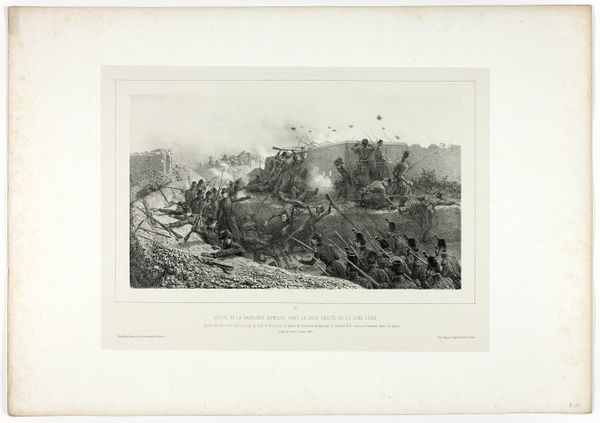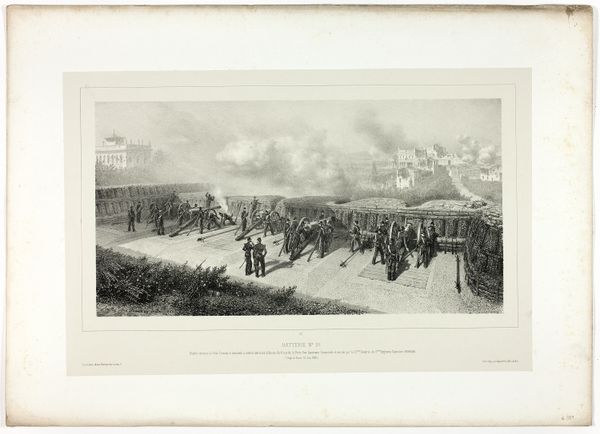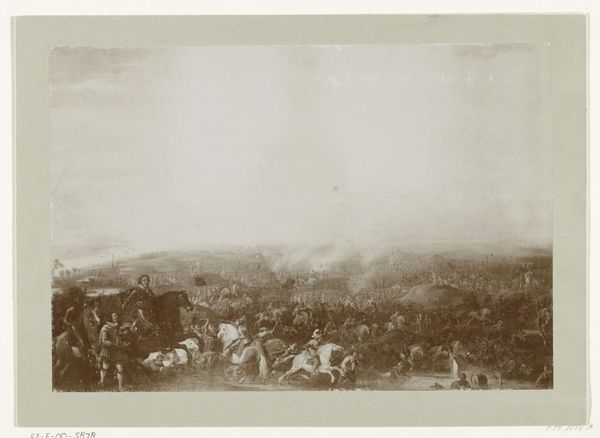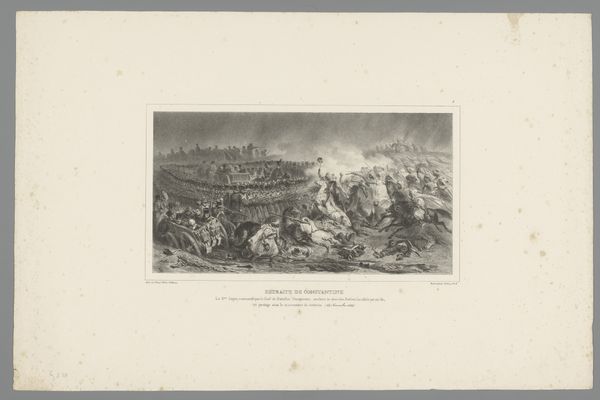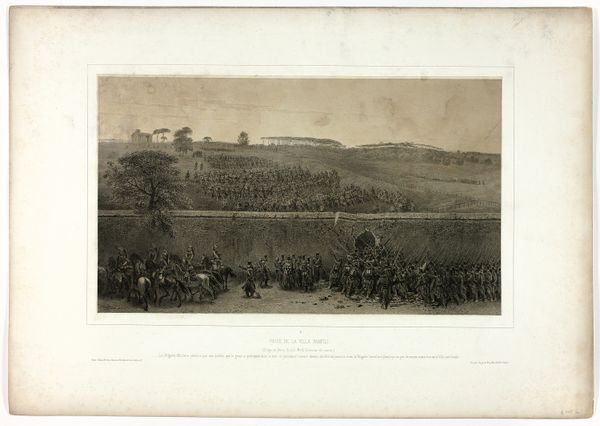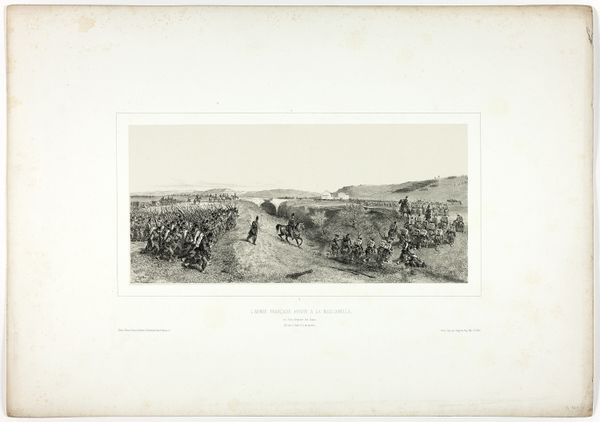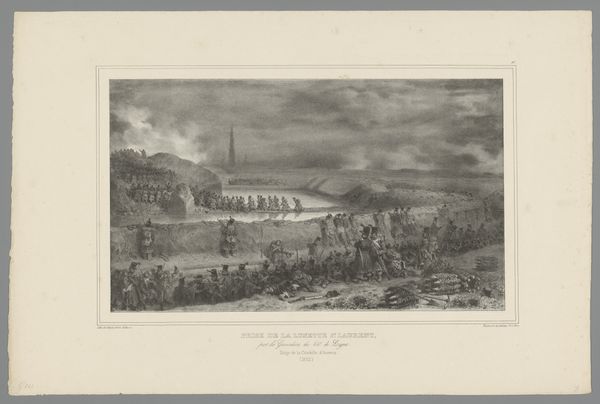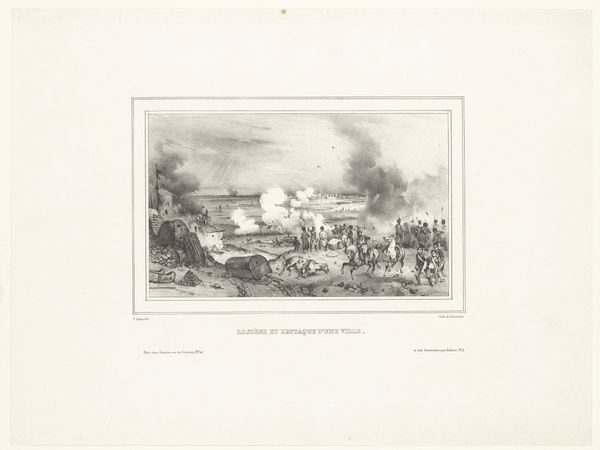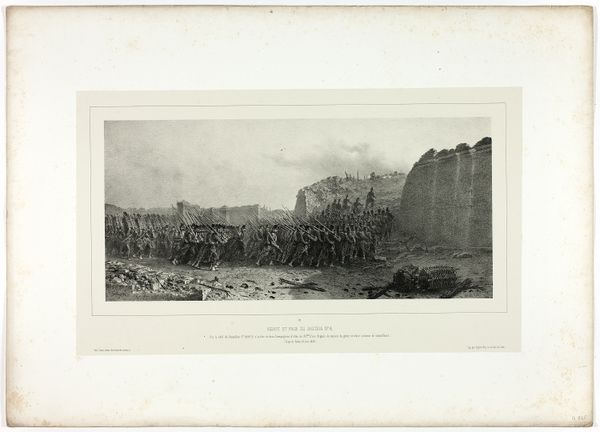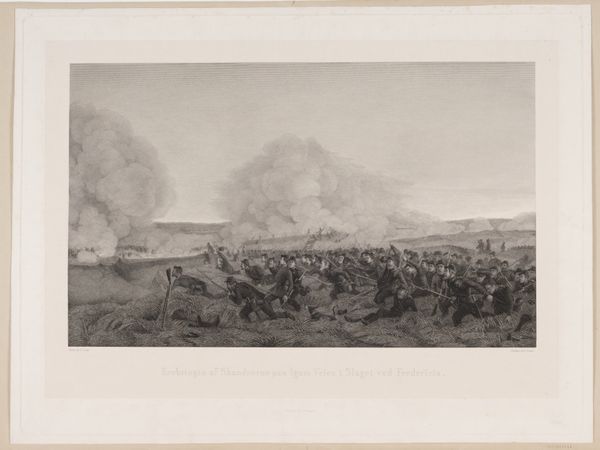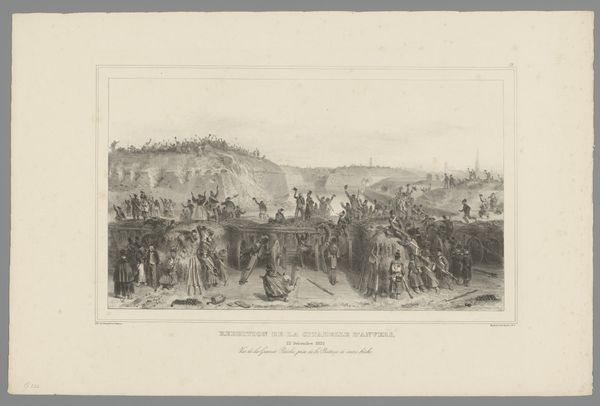
April 30, 1849, from Souvenirs d’Italie: Expédition de Rome 1850
0:00
0:00
drawing, lithograph, print, paper
#
drawing
#
narrative-art
#
lithograph
# print
#
paper
#
natural colour palette
#
romanticism
#
history-painting
Dimensions: 243 × 397 mm (image); 246 × 399 mm (primary support); 399 × 569 mm (secondary support)
Copyright: Public Domain
Curator: This is Auguste Raffet’s "April 30, 1849, from Souvenirs d’Italie: Expédition de Rome," a lithograph created around 1850, now residing here at the Art Institute of Chicago. Editor: My first impression is chaos – a swirling mass of figures rendered in incredibly fine detail. It feels both intensely active and yet somehow distanced, like a snapshot from a nightmare. Curator: The "Expedition de Rome" provides crucial context. We must recognize this as a French military intervention. Raffet, deeply embedded within the French historical narrative, portrays their campaign to restore papal authority against the Roman Republic. What do you make of that context impacting your initial impression? Editor: It completely re-frames that sense of distant chaos. This isn’t just conflict; it’s an active suppression of a republican uprising. It forces me to question the French imperialist project and its violent ramifications on notions of freedom and self-determination. Where does Raffet, as an artist, stand within this? Curator: A complex question! He's believed to have been commissioned to create imagery that glorified France's military exploits. Consider the strategic use of perspective: a teeming foreground of soldiers contrasted against the architectural backdrop. It creates a feeling of power and military advancement for viewers. The role of prints, in general, were important tools for propaganda at the time. Editor: But is it uncritical glorification? I mean, the grim expressions, the vulnerable postures…they hint at a different narrative, too, don't they? Are these romanticized heroes, or figures caught in a violent machine beyond their control? Even the very ‘natural color palette’ feels drab – are they in an oppressive land that lacks beauty? Curator: I see your point. There's ambiguity there. He documents events while navigating prevailing socio-political winds. Editor: It shows, yet despite Raffet's intensions and commissions, a closer reading today invites crucial engagement with art history, prompting urgent contemporary inquiry of colonialism, war, and representation. Curator: Agreed. Approaching art with this context allows us a glimpse into an era and the political narratives shaping it. Editor: Indeed! Analyzing artwork like Raffet's demands that we confront our complicity and the ever-evolving echoes of imperial actions and the voices they actively work to exclude.
Comments
No comments
Be the first to comment and join the conversation on the ultimate creative platform.

